| Zeitschrift Umělec 2004/3 >> Ars Electronica 2004 – Digital Cirkus, Mandalas and Traces | Übersicht aller Ausgaben | ||||||||||||
|
|||||||||||||
Ars Electronica 2004 – Digital Cirkus, Mandalas and TracesZeitschrift Umělec 2004/301.03.2004 Denisa Kera | info | en cs |
|||||||||||||
|
The 25th anniversary gathering of the Ars Electronica festival successfully encapsulated a quarter century of electronic and digital art. On one side it featured projects and presentations expanding on one of the original aesthetic values associated with technological art—interactivity. On the other, it strongly promoted projects dealing with computer visualizations that represent a more conservative aesthetic value of distance. Also the first interdisciplinary conference dedicated to visualization, “Language of Networks,” transpired prior to the official program. (for more, see www.aec.at/networks and www.fas.at. Unexpected attention was given to a number of projects working with the metaphor of trace. In lieu of bathing in the glow of digital technology’s overwhelming presence and power, these works entice to “digitally celebrate” unique, ephemeral moments and disappearing technologies.
From Interaction between Man and Machine to Social Emergence Interactive installations in recent years have rendered ironic the simple image of the interaction between person and machine, in which the machines fulfil the role of humble servants. The surprise from the feedback keep giving way to the question of the ubiquity of technology in our environment (Iso-phone) and the playful if carnival appearance of today’s technologies, (large Sensory Circus installation and FORE—interactive golf). The increasingly frequent blending of contemporary technology with toys is also the case of Topobo http://web.media.mit.edu/~hayes/topobo/ – 3D dice for playing, that can be combined to resemble various animals. These miraculous dice, moreover, remember movements assigned to the animals during the construction. The ubiquity of the technologies and their total penetration into our daily life is well expressed by a tank filled with water in the instalation Iso-phone http://www.medialabeurope.org/~stefan/hc/projects/isophone/. An individual is able to sit inside, put on a special helmet in order to be perfectly isolated from the outside world and listen to a normal telephone conversation. In a similar way, today’s society is “emersed” with information, and it is difficult to find a place without technology, such as a mobile telephone. Thanks to mobile telephones we literally swim amidst human conversations and a variety of information. Another very extensive installation, Sensory Circus http://timesup.org/sc/, aims towards enabling sensual preceptions rather than limiting it. This digital circus of various machines and interfaces protected by a large tent reacts to all movements of visitors that are inside. Colors, sounds and other attributes of the place, such as light and warmth, are modulated in reaction with the public. The installation attempts to invoke a feeling of some never-ending game—entertainment that can be very aggressive at times. Similarly playful and destructive was the interactive golf installation FORE http://www.comatronic.net/flyer.pdf . The movement of an actual golf ball reaches the virtual picture of the player in 3d space. The golf club has become a joystick with which one aims at a virtual representation of ones self, committing a form of technological suicide. The proximity of entertainment and killing, technological toys and death as a radical form of interactivity was even more explicit in the computer game-digital portrait of the Chinese artist Feng Mengbo Ah_Q http://www.mengbo.com/ah_q/; A modified game engine for Quake III changes all characters or the monsters into the avatar of the artist whom we shoot with a help of an interface using the movement of our legs. While the installation followed these playful, destructive and ubiquitous aspects of today’s technology, the lectures addressed more serious questions of the symbiosis of the individual and the machine, and more importantly today’s society and technology. Instead of control and destruction, the topic was the problem of emergence—the emergence of complex and unexpected social phenomena. New ways to bring people together are directly related to specific softwares and they affect our notion of organization and management of society as well as political power. Among the most importnat presentations was that of Joichi Ito http://www.neoteny.com, who summarized his wiki, that was founded on the topic of “emerging democracy.” In his opinion, weblogs, wiki and other forms of social software that enable direct links, dialogue and cooperation between the users (“many to many” relations), have the potential to solve problems of today’s democracy, particularly the absence of transparency and inability of solving complex questions related often to the fear from chaos. The simple interaction among the individual users with the assistance of a social software have power to set consensus and at the same time do not exclude anyone from the decission making that supports complex and emerging behavior. This is the basis of a true emergent democracy. Notable sign of this interest in the social form of interaction between man and machine that creates new communities and types of society, was this years’ new category in the contest over the gold Nike statue, “A Digital Community”. The various projects connecting the social sphere with the new technologies took part in this new category. One of the winning projects Wikipedia enables people to cooperate and create encyclopedia headings with the assistance of Wiki technology. This simple editing system allows all to reach to the given text and save its various versions. Wikipedia (www.wikipedia.org) already has 250,000 articles and headings in fifty languages on which thousands of people have worked. This “collective” brain or intelligence is not only the fulfilment of an enlightenment encyclopedia project, but it also enrichens it with the concept of “open source” that is offered for free to all people in the world. Digital Mandalas or Artistic Visualization? The interest in computer visualization and creating different databases is possibly the most resilient trend in digital art in recent years. It is related to the effort to represent in a comprehensive way the exponential growth of information and the increasingly complex structures that are appearing today from the connection of society with new technologies. Visualizations are also the most visible expressions of interdisciplinarity, because they connect interesting design, that often has artistic ambition, with scientific and other data that need to be analyzed and interpreted. They are actaully a digital mandalas that offer arduous, yet artistic and synthetic view on today’s world immersed in information and data. Visualization, therefore, has become the medium of self reflection for this year’s Ars Electronica. One of he projects, TraceEncounters http://www.traceencounters.org/ has even connected both aspects of contemporary technology and art: Emergence and Visualization. Special software vizualised the emergent behavior of a system, as is a gathering of many thousands of artists and people at this festival, The software charted the relations among thousands of participants. that were given, as a decoration, a needle with a small wireless IRDA. During the meetings and encounters, this needle transmitted and accepted identification numbers from the pins of other people. For the period of the five day festival, the needles indicated who met with whom and for how long, and this information was depicted on a special chart. These paths of the participants and their relationships created an image of the social dynamic of the whole festival, from which future projects and contacts will be made. Another project, Memory Theatre, recorded and visualized 25 years of the festival on a number of maps that represent the relations between the theoretical texts and the conceptions, the artistic works and the technologies and participants over the years. Part of the projects, the Archiquarium was a map of all artworks realized at Ars Electronica since 1996. An entire wall with this map served as a portal to more information that could be reached with a PDA directed at a part of the map. Thanks to RFID technology the given part of the map was connected with more information about the participants and projects from the archive. The physical space of the walls simply became an interface to enter the virtual space of data. Memory theater and other visualizations and charts are not only abstractions and reductions of complex phenomena, but also a type of new “realism”. The interactive aspects of maps enable us to see in more details the particular phenomena. They are a genuine monads that, thanks to the accessible interface, offer a total view upon the complixity of today’s world, and yet don’t forget details. Each part of the map contains in itself a whole new universes of information and relationships like a monad or a fractal. The content of visualizations is mainly networks, interactions and relationships between different elements, whether they are people, texts, words or whatever else. They confirm the basic idea of the French philosopher, Bruno Latour, that in order to understaand the modern society, it is important to take into account all factors, whther they are people, ideas, scientific facts, or social phenomena as similar elements whose relationships and interactions are to be mapped. The division between database and software in visualization projects reflects this methodological division between elements (actans) from processes. This is almost a return to the Renaissance mnemotechnic aids in which one is recommended to divide space from content and ideas that are to be memorized (Giulio Camillo and his memory theatre). The Digital Trace and the Esthetic of Ephemeral Phenomena While artistic visualizations record and retain a large quantity of information in an synoptical and accessible form, a part of the artistic projects took on the task of addressing that which is permanently disappearing, the ephemeral moments, old technologies and other phenomena that have the character of a mere trace not asking to be permanently “remebered” and conserved. We can even state that this strange aesthetic of digital trace dominated this year’s exhibition. Whether it was a trace of chatroom conversations in the winning project for the interactive section, Listening Post, or the database of 3,000 traces in the snow on various roads that set to music for the winning project in the musical section, Banlieu du Vide, http://www.filmfestivalrotterdam.com/en/film/27254.html, or perhaps the traces—pictures of the handmovements in the portrait of the American choreographer, Merce Cunningham (Loops), all these projects demonstrated the ability of digital technologies to artistically render and immortalize disappearing traces. http://web.media.mit.edu/~marcd/personal/works/loopsSystemInfo/aboutLoops.html. The winning project Listening Post http://earstudio.com/projects/listeningpost.html depicted on 231 text panels words and sentences from various chat groups that someone had written just before. In the first cycle, a robot searches sentences beginning with the phrase, “I am” that would then appear on panels and also as read by a voice. One could follow these incidental sentences as if following a live shaping of the collective consciousness of the humankind in a never-ending global conversation. Except these ephemeral moments, such as chatroom conversation, another project enabled us even to follow the fleeting moments in people’s lives. On the page, 1,000 deathclock http://www.1000reallife.net/newwin.html, the visitor (art purchaser) would first select the number of years that he would wish to live, then he could follow as this time passes by in one tenth of a second below his and others’ portraits. Two other projects concentrated on the traces of old analog media rather than human traces. In the installation, We interrupt your regularly scheduled program http://www.daniel-sauter.com/tv_flow/, the individual scenes from the TV program were compressed into a single pixel of a designated color that was then projected on the wall as a colored stripe. While switching the programs or following the scenes, the color was constantly changing, indicating the rhythm and contents of the specific programs. The reduction of the broadcast to these digital strips fully neutralized the passionate and entertaining tones of the television programs. Another interesting connection between the digital and analog technologies was presented by the project Sur la table.The same artist (Osman Khan) http://users.design.ucla.edu/~osman73/pxlstream.html, uses digitally colored auras to depict surrounding objects set upon a special table. An interesting sensation of time emerged with these objects on the table that we are not normally aware. Moreover, the changes of these traces of everyday objects formed of the whole table a canvas for abstract pictures. The most beautiful and impressive project of the whole exhibition was the Moony http://www.aec.at/en/center/project.asp?iProjectID=12780, which sought the ways to catch the traces of something as ephemeral and light as a butterfly. The projection of a digital butterfly in steam lent a fully spectacular feeling of refreshing dew and other attributes of nature and forests. Butterflies reacted to the movement of hands and disappeared or fled from attempts by visitors to catch them. These diverse forms of digital traces all led to our coming to terms not only with human mortality but also to reconciliation of old and new technologies as well as nature and technology. In these projects, the technologies surrendered their power to conserve and modify and completely fall for the magic of the moment that is as powerful as the emergence of new softwares or universality of the visualizations.
01.03.2004
Empfohlene Artikel
|
|||||||||||||
|
04.02.2020 10:17
Letošní 50. ročník Art Basel přilákal celkem 93 000 návštěvníků a sběratelů z 80 zemí světa. 290 prémiových galerií představilo umělecká díla od počátku 20. století až po současnost. Hlavní sektor přehlídky, tradičně v prvním patře výstavního prostoru, představil 232 předních galerií z celého světa nabízející umění nejvyšší kvality. Veletrh ukázal vzestupný trend prodeje prostřednictvím galerií jak soukromým sbírkám, tak i institucím. Kromě hlavního veletrhu stály za návštěvu i ty přidružené: Volta, Liste a Photo Basel, k tomu doprovodné programy a výstavy v místních institucích, které kvalitou daleko přesahují hranice města tj. Kunsthalle Basel, Kunstmuseum, Tinguely muzeum nebo Fondation Beyeler.
|







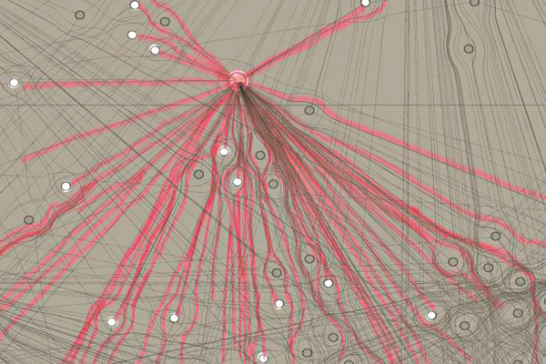





















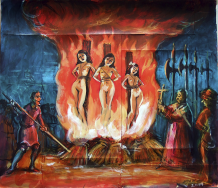




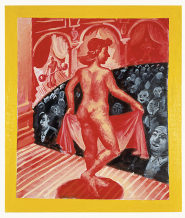
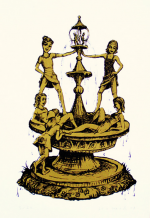
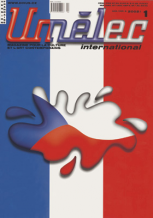
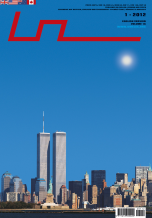


 Potsdamer Str. 161 | Neu Divus in Zwitschermaschine, galerie und buchhandlug in Berlin! | Mit U2 nach Bülowstraße
Potsdamer Str. 161 | Neu Divus in Zwitschermaschine, galerie und buchhandlug in Berlin! | Mit U2 nach Bülowstraße
Kommentar
Der Artikel ist bisher nicht kommentiert wordenNeuen Kommentar einfügen